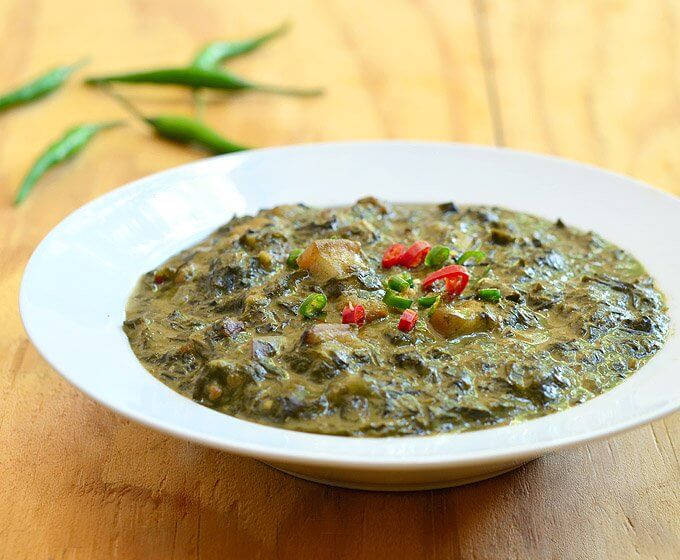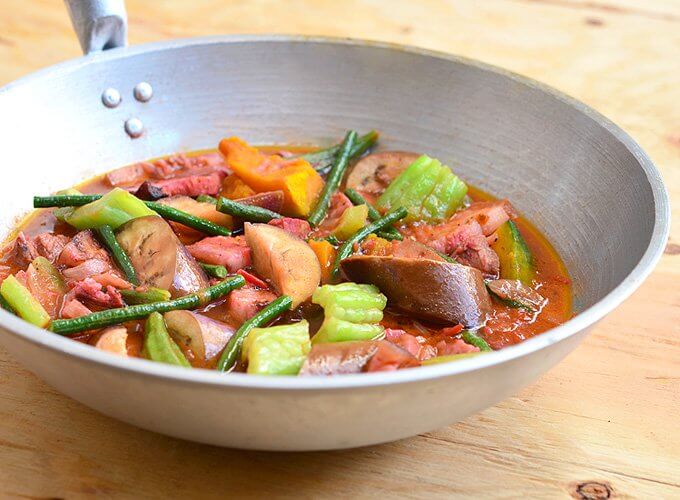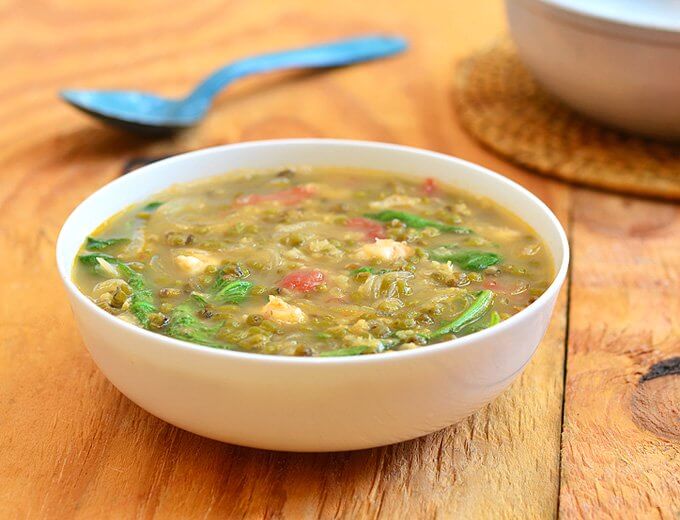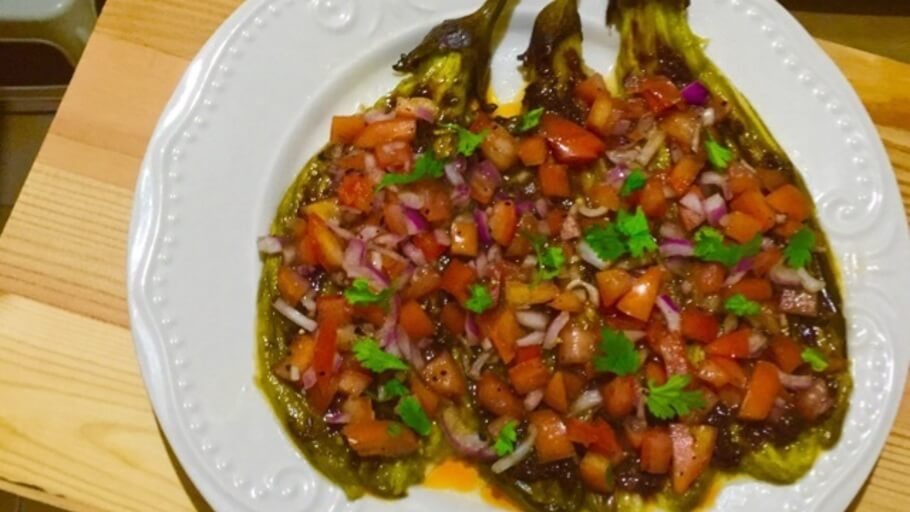Bland and unhealthy are two of the most common adjectives foreigners use to describe Filipino food.
Our colonial past is somewhat to blame for this since we’ve been colonized by Spain with its meat-centric dishes dripping with too much oil and fat, and the United States with its addiction to fast food and processed food. Fusion with Japanese cuisine might have done wonders to ours, alas, they were only here for four years and yet still managed to kill as much as a million Filipinos and razed much of Manila to the ground.
However, in our defense, our cuisine, while not as famous as Chinese, Japanese, or even Thai or Malaysian, is still pretty good, provided you know where and what to look for. It can be as tasty and as healthy as you want. To prove that, we’ve gathered five traditional Filipino dishes that are not just tasty but healthy as well.
- Laing

A dish native to Bicol Region in the island of Luzon, Laing is a Filipino dish made of dried taro leaves and coconut milk. This dish is pretty simple to prepare, you just need to follow the recipe to the tee and adjust the taste depending on your spice preference by adding more shrimp paste (bagoong) or chili peppers. This should be cooked low and slow to allow the flavors to come together.
Check the recipe and procedure here
- Pinakbet

 One of the most popular vegetable dishes in the Philippines, Pinakbet is the Tagalog version of the Ilocano dish, Pakbet. This dish usually includes the following vegetables: squash, eggplant, string beans, bitter melon, and okra. You can add other vegetables depending on your preference. Also, you can decide if you want shrimp or pork as protein of choice for this scrumptious dish.
One of the most popular vegetable dishes in the Philippines, Pinakbet is the Tagalog version of the Ilocano dish, Pakbet. This dish usually includes the following vegetables: squash, eggplant, string beans, bitter melon, and okra. You can add other vegetables depending on your preference. Also, you can decide if you want shrimp or pork as protein of choice for this scrumptious dish.
Check the recipe and procedure here (pork)
Check the recipe and procedure here (shrimp)
- Lumpiang Ubod

Lumpia (rolls) has three main variations in the Philippines. There’s Lumpiang Shanghai (Spring Rolls), Lumpiang Prito (Fried Rolls), and Lumpiang Ubod (Palm Heart Rolls), the healthiest of the three due to the fact that it’s mostly vegetables. Lumping Ubod is also called Lumpiang Sariwa (Fresh Rolls) because it is the fresh variant of the otherwise fried Lumpia varieties. This dish is composed of vegetable strips that are encased in a soft crepe-like wrapper.
Check the recipe and procedure here
- Ginisang Munggo

One of the most prevalent vegetable dishes in the Philippines, the main ingredient of Ginisang Munggo, the mung bean is not native to the Philippines. It is originally from India and Pakistan and was just brought here where it instantly became a hit with Filipinos. It must be noted that the mung bean is also used for local desserts such as Ginataang Munggo and Munggo Turon. This vegetable dish is easy to cook and rather inexpensive, you can choose which protein to use (pork, seafood, or chicharron, a Filipino snack made from pig skin).
Check the recipe and procedure here
- Ensaladang Talong

For the majority of Filipinos, salad means fruit salad, a mixture of canned fruit cocktail drowned in condensed and evaporated milk. A healthy salad dish usually means lettuce with carrots doused in ketchup and mayonnaise. This salad dish, Ensaladang Talong (Eggplant Salad), is one of the few exceptions. It is made from grilled eggplants, tomatoes, and onions, and usually acts as side dish to grilled seafood or other meat.
Check the recipe and the procedure here
Watch Your Rice Serving
Filipino dishes might not have the same stellar reputation that other countries’ cuisines have, but then, does the validation of foreigners matter when it comes to our food? We know that Filipino dishes generally taste good and the fact that we dose them with vinegar and soy sauce to preserve them from spoilage brought by the harsh tropical sun. They are tasty and, what do you know, healthy as well.
Giving these healthy dishes a spin is good and all but try to keep in mind that you should still watch your rice consumption. True, they are healthy, but then an excess of rice means more glucose for your body. Which, as we all know, leads to either full-blown diabetes for prediabetics or worsening complications for diabetics. You can enjoy these dishes without eating a disproportionate amount of rice.



